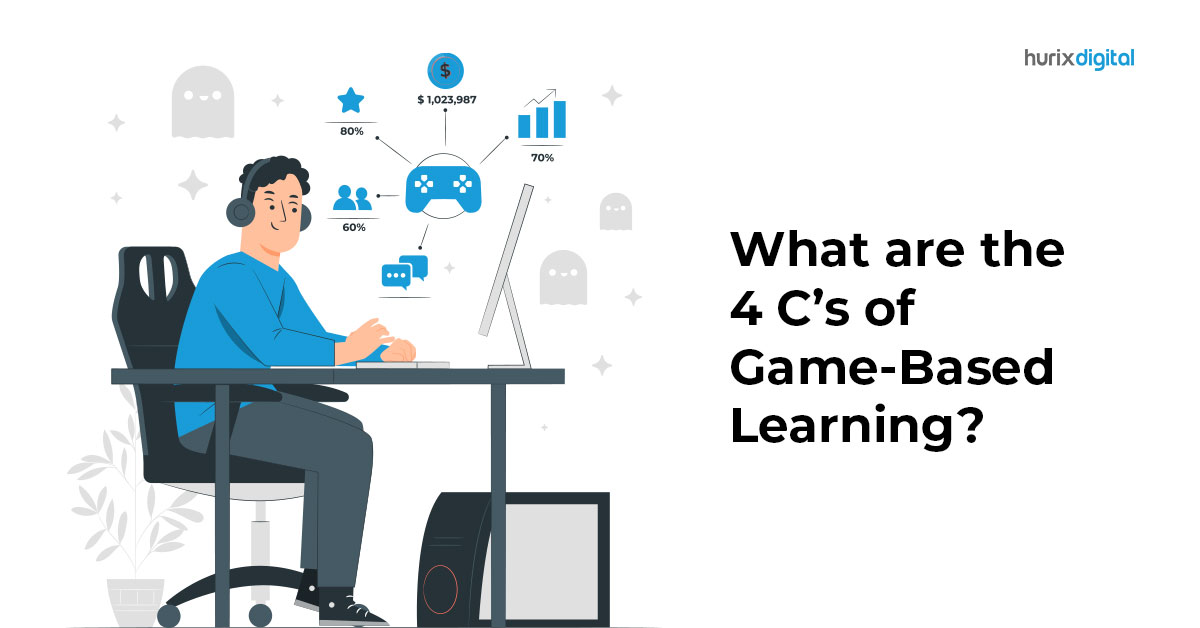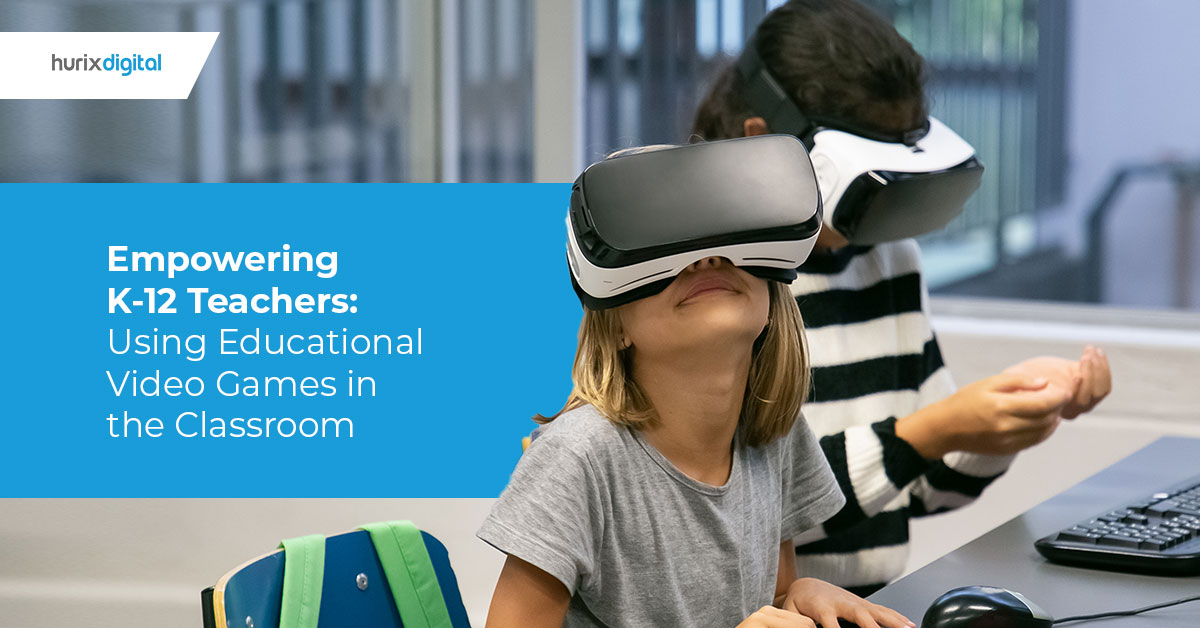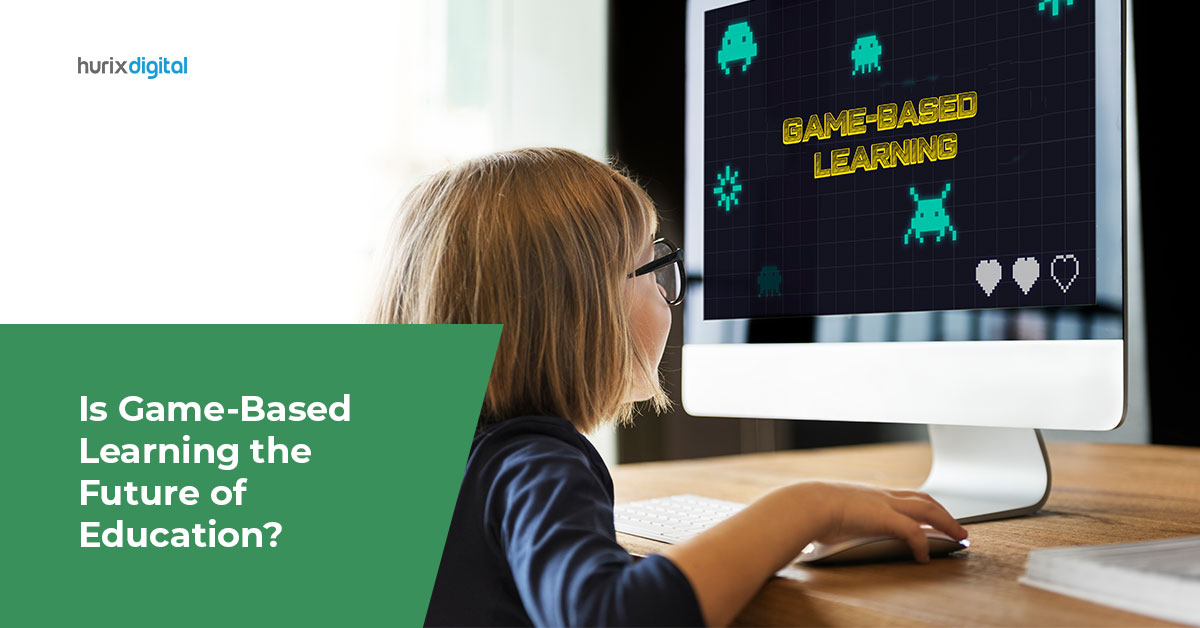
What are the 4 C’s of Game-Based Learning?
Summary
This blog post outlines the C’s of game-based learning. It discusses key elements and explains how each contributes to creating engaging, educational experiences that enhance learning outcomes and student motivation.
Game-based learning is a teaching strategy that invokes games to achieve specific learning outcomes. As such, game-based learning is a supplemental tool that K12 educators use in classrooms across the globe. Indeed, educational video games are designed to support, rather than replace traditional teaching methods. The chief objectives of using game characteristics (via digital learning games) to teach 21st Century skills, are to promote Critical thinking, Collaboration, Creativity, and Communication, collectively known as the 4 Cs of game-based learning.
The four Cs of game-based learning are vital components of effective game-based education. In this article, we will examine how the game-based learning method promotes the growth and development of these four crucial skills.
Table of Contents:
- Game-Based Learning Requires Critical Thinking
- Digital Learning Games Enhance Creativity
- Online Game-Based Learning Improves Communication
- The Game-Based Learning Method Emphasizes Collaboration
- Game-Based Learning Method: Cultivating Skills for Life
- Wrapping Up
Game-Based Learning Requires Critical Thinking
Experts agree that the development of critical thinking skills is essential in K12 education. Some argue that it is the most important skill for students to learn. Defined as “the objective analysis and evaluation of an issue to form a judgment,” critical thinking may also be summarized as being able to make reasoned judgments, which are logical. Others may view critical thinking as the ability to decide what is true, and what you should therefore do.
Irrespective of how you would personally define it, all critical thinking requires decision-making and careful analysis. Considering that digital learning games require players to make decisions after decisions while playing them, it follows that online game-based learning helps to foster critical thinking skills.
Critical thinking skills will be required as students progress through their education, and into the workforce. As a highly transferable skill, students must learn how to think critically when young, and continue to practice the skill as they age. With digital learning games available for all K12 levels, the game-based learning method is an incredibly useful tool for educators worldwide.
Also Read: Online Learning Games – Making Remote Learning Fun for K12 Students
Digital Learning Games Enhance Creativity
The world’s foremost innovators are unabashedly creative individuals. Why? Because creativity leads to innovation. Were the world’s most successful entrepreneurs and innovators born this way? Perhaps. But creativity can also be taught, and digital learning games can be an excellent tool for teaching students to think outside the proverbial box.
But how exactly does the game-based learning method foster creativity?
1. Problem-Solving Challenges
Solving problems to advance to the next level in digital learning games requires students to formulate strategies for solving puzzles, riddles, and even in-game tricks. It leads to the development of innovative solutions.
Consider, for example, games that allow players to build their cities. They will be tasked with feeding the civilizations, meaning they must grow or hunt food. But, they determine the best tools and weapons to create the food. They will have to solve the problem of shelter or housing, which requires careful consideration of the materials and resources available.
In all high-quality educational video games, players will have to solve a multitude of problems ranging from simple to complex.
2. Immersive, Artistic Experiences
Game-based learning methods intentionally expose students to vibrant colors, imaginary worlds, music or sounds, and augmented reality of storytelling, which in and of themselves are creative. Games are so effective at introducing students to creative expression, that studies have shown that children who play video games were more creative in their drawings and storytelling than those who played fewer video games.
3. Personalization
Many online game-based learning tools available from top K12 education companies allow the players to personalize their character, their world, or their narratives. From designing an avatar to creating a working farm, to crafting a personal narrative through choices made, the ability to create directly within the game can help promote creativity.
Online Game-Based Learning Improves Communication
Communication is the third C of game-based learning. Game-based learning methods support communication skill-building in a variety of ways. Firstly, students will need to communicate with their peers if playing digital learning games as a team. They may also need to communicate effectively with the game via in-game chats, voice chats, or even online forums.
In post-gameplay classroom discussions, students further hone their communication skills by explaining what their strategy was for advancing to the next level. They may learn to debate the merits of one choice compared to another choice. They will gain meaningful practice in clearly and persuasively communicating with others.
Moreover, game-based learning can support non-verbal communication skills. For example, clues given in games, or gestures of characters in games help students to develop a broad set of communication skills that will serve them as they matriculate into college, and ultimately enter the workforce.
The Game-Based Learning Method Emphasizes Collaboration
The final pillar of the four Cs of game-based education is collaboration. Collaboration is championed through the game-based learning method. Digital learning games require students to partner with others in team events. They may require compromising with other players to ensure that all students get equal play time. Players may need to build partnerships or learn to barter with one another in other digital learning games. Collaboration helps to cultivate critical skills including empathy, teamwork, and leadership, all of which are essential to succeeding in the 21st Century.
Game-Based Learning Method: Cultivating Skills for Life
At the heart of the game-based learning method are the Four Cs: Collaboration, Communication, Critical Thinking, and Creativity. These four pillars form a foundation for successful game-based education. These skills are invaluable in K12 education and necessary for success in higher education or the workforce.
Even better? Online game-based learning offers immersive and interactive environments where students have fun while developing these critical skills. As such, educators who wish to increase student engagement, motivation, knowledge retention, and digital literacy can rely on game-based learning products from top K12 education companies to deliver the games that will accomplish these objectives.
Also Read: How to Use Educational Games to Promote Social-Emotional Learning in the Classroom
Wrapping Up
As a leading provider of premium K12 digital solutions, Hurix Digital is proud to partner with Game Learning. Game Learning is a leading EdTech company that develops K12 educational video games focused on Maths, Science, ELA, and Social Studies. To learn more or to request a free demo, contact us today.

Matt Massman is the Founder and CEO of Game Learning, a leading EdTech company based in Los Angeles. Massman has spent his career developing educational tools to improve the way students learn. Previously, he launched Vinci Academy with Dr. Dan Yang. As Founder and CEO of Mass Equity, a privately held real estate development company, he has facilitated more than $1 Billion in developing preK-12 educational facilities.








